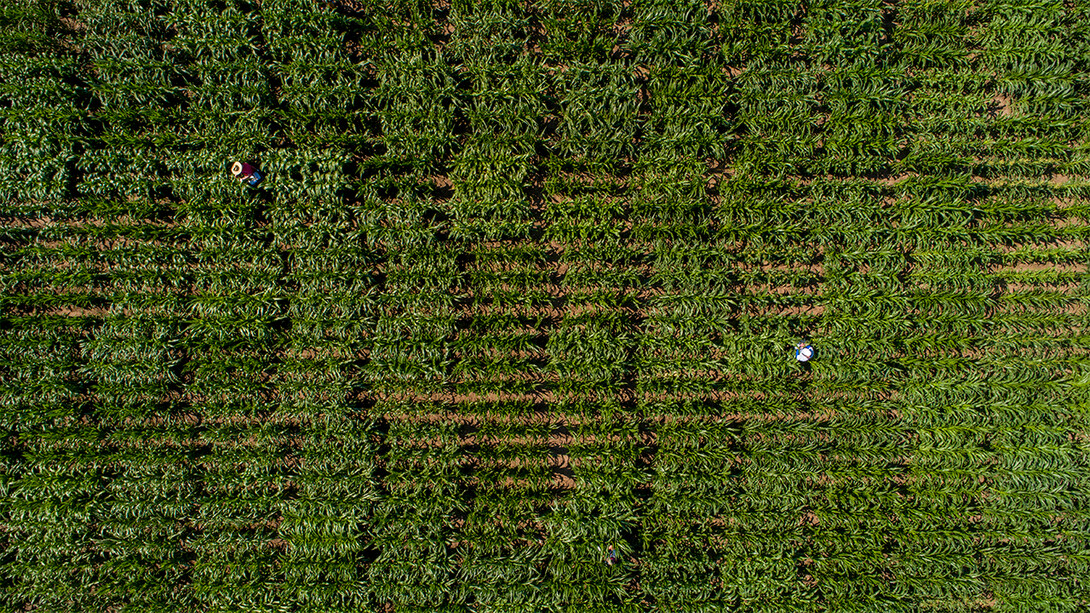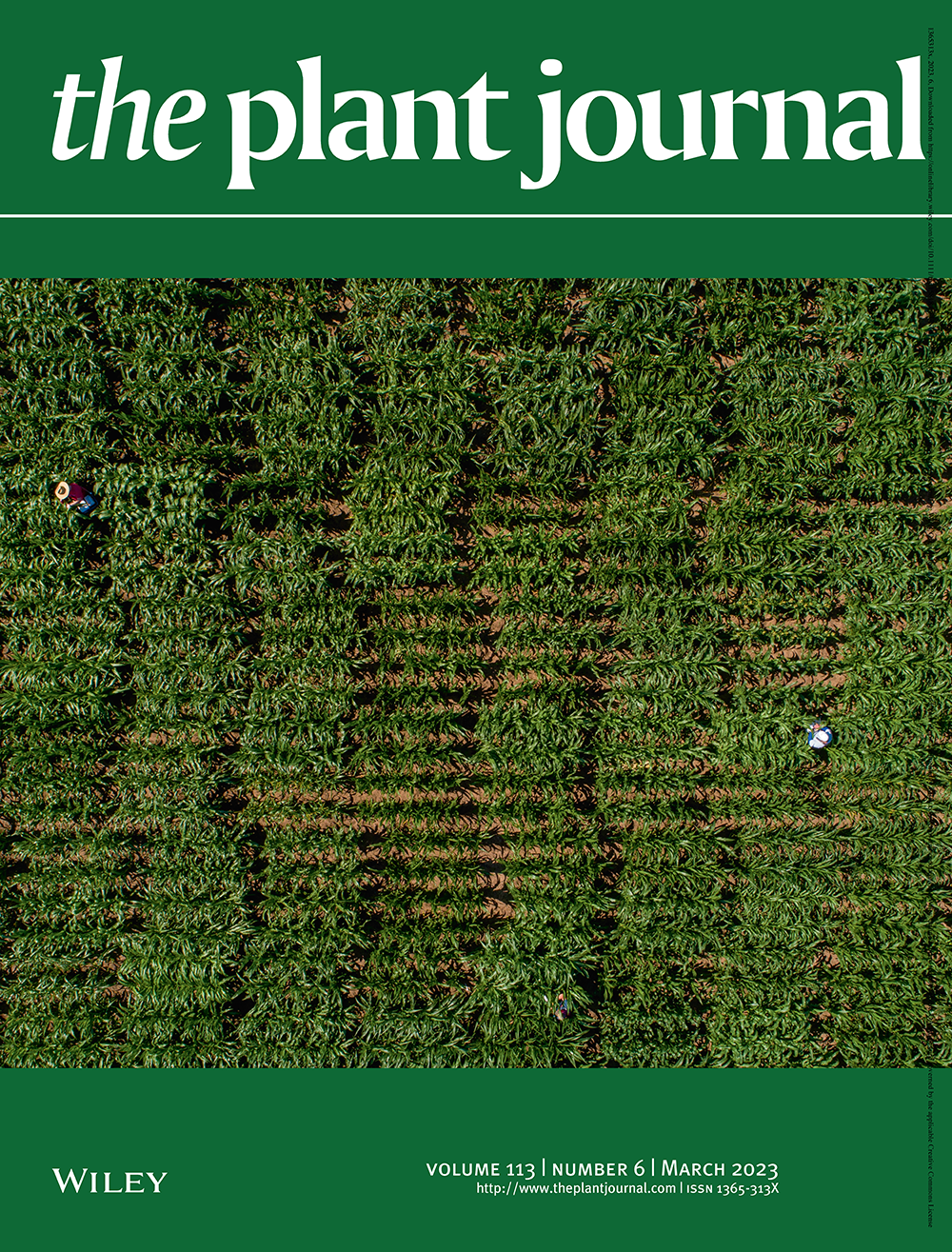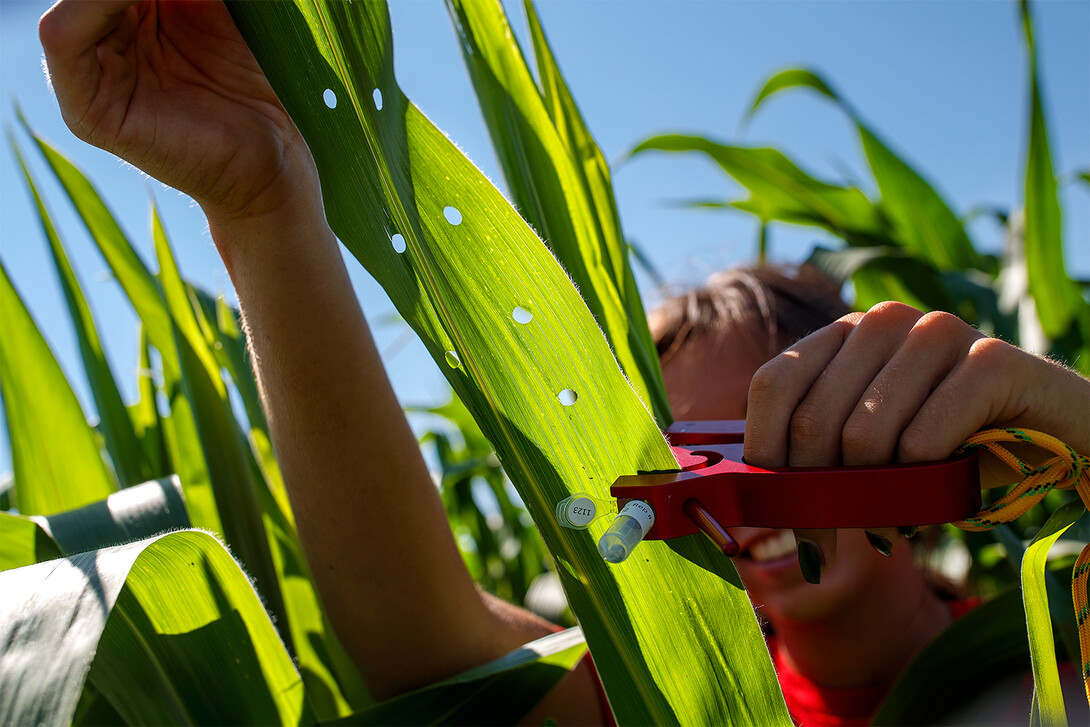
Welcome to the snapshot of a Husker-made image that recently drew eyes and earned exposure beyond the confines of campus. Looking to learn (in <1,000 words) how our photographers and artists create the iconic? Picture this…
It could pass for shag carpeting well past whatever passed for its prime. Or a patch of grass, maybe, in need of a cut and some overseeding.
A closer look, though, reveals a couple of hat-topped figures wedged between the signature rows of its true identity: a cornfield. A Cornhusker cornfield, to be exact.

Craig Chandler, director of photography for the Office of University Communication and Marketing, captured the image back in July 2020. But his sun-splashed shot just got another day in it courtesy of The Plant Journal, an academic publication that chose Chandler’s composition for the cover of its March 2023 issue.
The photo depicts the efforts of a research group led by James Schnable, the Gardner Professor of Agronomy at Nebraska, as it wades through stalks and leaves at the Havelock Research Farm in northeast Lincoln. The team was rushing to collect tissue samples by punching holes in corn leaves. Those circular samples would eventually help the researchers compare genetic diversity among roughly 1,500 types of corn worldwide.

“It was very stressful at the time,” Schnable said. “But looking back, the teamwork and camaraderie that went into successfully planting and working that field in the middle of the pandemic is a very fond memory of mine.”
After an initial trek to the field that morning, Chandler rejoined the researchers at roughly 3 in the afternoon, just as the mercury was climbing into the low-90s Fahrenheit.

“There’s nothing like the humidity of a cornfield,” Chandler said. “It was hot and sticky, and everyone was sweaty. That makes for better pictures, which is why I was out there. It shows that grit.”
Chandler captured that grit with shots from the ground before turning to his trusty DJI Phantom 4 Pro, a camera-equipped drone. Earning the legal right to pilot the drone required some grit of its own: A few years earlier, he’d spent a few dozen hours studying for the license that would allow him to fly it.
“It’s the equivalent of a pilot’s license,” he said, “without flying a plane or knowing how to land in an airport.”
Though he directs the drone with a controller akin to a gamer’s — joysticks for altitude and direction, buttons for orienting the camera to take photos or video, a fold-out screen to see what the drone sees — Chandler has to account for some very real issues while in the air. One, naturally, is the wind so often sweeping through Nebraska. Another is battery life. In 2020, his drone batteries lasted only about 20 minutes apiece, meaning that Chandler had to time his flight if he wanted to catch the team as it passed through the most picturesque plots of corn.
The No. 1 consideration, Chandler said, is one he doesn’t usually have to worry about: the safety of the subjects he’s photographing. To mitigate the risks of a drone dropping out of the sky — and onto someone’s head — the Federal Aviation Administration mandates that drone pilots never fly their rotor-propelled birds directly over people.
“My rule is: If it dies (in the air), and it’s suddenly a brick, it won’t hit anybody,” he said, noting that the precaution explains why subjects often appear near the edges of drone-captured photos.
Chandler estimated that he took the cover-worthy photo from about 200 feet in the air, or half the maximum height allowed by the FAA. As for why the appeal of drone photography seems to stretch as far and wide as the vistas it yields? Chandler figures that, in viewing the pedestrian from the airborne, photographers are also recasting the ordinary as the extraordinary.
“I think it’s just a different view of the world,” he said. “I won’t lie: I say the drone is the funnest camera I have, because how cool is it to get to fly your camera around? A lot of it is just (photographing) the things you can see from places you’ve never seen before.”
Before joining the university 15 years ago, Chandler — a former photojournalist and photo editor at numerous newspapers — would never have had reason to look for his work on a peer-reviewed publication. But seeing one of his photos grace The Plant Journal did bring a nostalgia-powered smile.
“As an old newspaper guy,” he said, “it’s fun to see something in print.”







